|
View as a webpage
|
  North Algodones Dunes Wilderness, El Centro Field Office
Photo by Bob Wick, BLM
|
|
ISSUE 927 - November 5, 2020
|
|
|
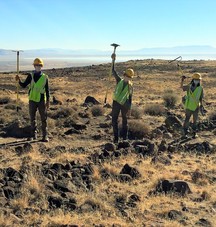
Crews from the Student Conservation Association lend a hand to Bald Mountain trails
Our Eagle Lake Field Office is happy to host a crew once again from the Student Conservation Association. This crew has been hard at work improving our recreational trails by grooming and refining drainage contours on recently completed trails in the Bald Mountain trail network near the community of Janesville, Calif. They have been camping out on the mountain overlooking the Honey Lake Valley, enjoying spectacular sunrises, and spending warm fall days making our trails even more inviting for horseback riders, mountain bikers, hikers, and runners. We appreciate their hard work and enthusiasm! (BLM CA Facebook)
|
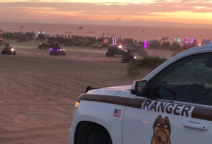
BLM Law Enforcement helping to keep riders safe at the Imperial Sand Dunes
At the Imperial Sand Dunes Recreation Area, BLM law enforcement works with multiple agencies to respond to medical emergencies and to provide safety education. These partnerships with local, state and other federal agencies help keep the public safe. Please recreate safely and responsibly in any BLM OHV area! (BLM CA Facebook)
|

Recreate responsibly while still having fun in BLM OHV areas!
OHV recreation with family and friends goes hand-in-glove with responsible recreation. While visiting the Imperial Sand Dunes or any Bureau of Land Management OHV area, please plan to social distance, and before you leave home, know the latest safety information and updates available. Safety is everyone's responsibility! (BLM CA Website)
|

BLM staff and partners clear OHV trails in Tungsten Hills
Staff from the Bishop Field Office worked with Advocates for Access to Public Lands and the Adventure Trail System of the Eastern Sierra to clear an overgrown OHV route in the Tungsten Hills. Sometimes a little sweat goes a long way to help improve access! Thanks for helping to improve access on the trail! (BLM CA Facebook)
|
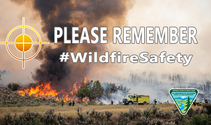
Updates on target shooting restrictions
Target shooting and other fire restrictions remain in effect for some areas of BLM-managed public lands in California. Restrictions on target shooting do not prevent hunting with a valid hunting license. Visit the BLM California Fire Restriction website for the latest information on fire and target shooting.
|

Saddle-trained wild horses available for adoption via Zoom Nov. 19
Eight saddle-trained wild horses will be available for adoption, Thursday, Nov. 19, in a virtual competitive-bid event starting at 6 p.m. Pacific Time via Zoom. The animals are offered by the Bureau of Land Management in coordination with Sacramento County Sheriff’s Office.
The wild horses available for adoption were trained by inmates in the Rio Cosumnes Correctional Center wild horse training program in Elk Grove. The training program, established in 2013, provides opportunities for participating inmates to gain valuable professional and life skills while training wild horses for placement into good, private homes. The wild horses were gathered from overpopulated herds on western ranges as part of BLM’s mission to manage healthy horses on healthy public lands. (BLM CA News Release)
|
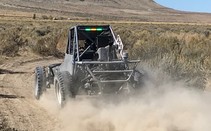
Race planned for Fort Sage OHV area near Doyle Nov. 7
On Nov. 7, the “Fight at the Fort” off-road-vehicle race will take place at the Fort Sage OHV Area near Doyle. Public riding and driving will be restricted in parts of this Bureau of Land Management OHV area during the race. (BLM CA News Release).
|

BLM and USFWS work together to monitor the Kangaroo Rat, a federally endangered species
The BLM Bakersfield Field Office, in partnership with neighboring U.S. Fish and Wildlife Service, conducted a catch-and-release of Kangaroo Rats at the Atwell Island Land Restoration Project Area to monitor known populations of Tipton Kangaroo Rat (TKR), a federally endangered species. TKR reside in isolated populations within the San Joaquin Central Valley. They inhabit saltbush scrubs, valley sink scrub, and sparse grasslands containing alkali-type soils and the biggest threat to these critters is habitat loss. The BLM Bakersfield Field Office has worked to maintain favorable habitat for the TKR population within the project. Annual data collection provides important information assisting in the management and recovery efforts for this and many other endangered species. (BLM CA Facebook)
|
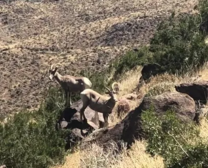
Bighorn sheep in Palm Springs area to be collared, tagged in helicopter operation
Adult female Peninsular bighorn sheep south of Palm Springs will be collared and tagged throughout the weekend into Monday by the California Department of Fish & Wildlife, weather permitting. Ten ewes in the San Jacinto Mountain region were collared on Friday. "The captures that we did today, the timing was really great," Erin Schaeffer, Fish and Wildlife project lead, said Friday. Collars that were previously put on the sheep in 2017 just dropped off on Thursday, she said. (Desert Sun News)
|
 BLM California has issued season fire restrictions due to increased wildland fire danger in the state. Here’s an interactive MAP showing all current fire restrictions. Be sure to bookmark it for future use!
Target shooting and other fire restrictions remain in effect for some areas of BLM-managed public lands in California. Find specific restrictions by field office on our Fire Restriction webpage. Restrictions on target shooting do not prevent hunting with a valid hunting license, as hunting on BLM public lands is managed by the California Department of Fish and Wildlife. Please visit the State website for more information.
Berryessa Snow Mountain National Monument and adjacent areas
Case Mountain Recreation Area
Panoche and Tumey Hills vehicle closures extended
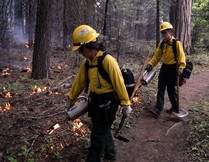
Ever dreamed of becoming a wildland firefighter? Here's the first step!
Applications for federal firefighting positions are submitted on USAJOBS. After you set up an account and login, the second step is to search for a fire job that you might qualify for. Hint: search for "Forestry Technician" or "Wildland Firefighter".
Here's a short video on Twitter that offers help on how to search for a job on the USAJOBS website
|
|
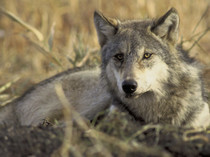
Trump Administration returns management and protection of Gray Wolves to states and tribes following successful recovery efforts
The U.S. Fish and Wildlife Service based its final determination solely on the best scientific and commercial data available, a thorough analysis of threats and how they have been alleviated and the ongoing commitment and proven track record of states and tribes to continue managing for healthy wolf populations once delisted. (DOI News Release)
|

The BLM's William Perry Pendley on the west coast fire season
Deputy Director of Policy and Programs for the Bureau of Land Management, William Perry Pendley, checked in with KOH’s Daniela Sonnino this week to talk about the worst wildfire season on record on the west coast. (KOH AM 780 Radio)
|

This week at Interior: video update
The Trump Administration grants military veterans and Gold Star families free access to national parks, wildlife refuges and other federal lands managed by Interior starting this Veteran’s Day; Secretary Bernhardt signs an order giving the nation's fifth grade students and their families free access to our public lands through August, 2021 due to some fourth grade students being unable to use the Every Kid Outdoors pass at the beginning of the year in light of the pandemic; celebrating the successful recovery of gray wolves after 45 years on the Endangered Species List; Interior’s Economic Report for Fiscal Year 2019 highlights the Department's positive impact on managing public lands and private sector job support; the Deputy Secretary travels to Pennsylvania and Ohio to highlight critical minerals, the One Trillion Tree Initiative, and abandoned mainland recovery; a new new mobile tool from USGS brings storm and flood information to your smartphone; we salute the creatures that fly by night during Bat Week 2020, and the stunning autumn scenery of Guadalupe Mountains National Park in Texas slides into our social media Picture of the Week! (DOI Video)
|
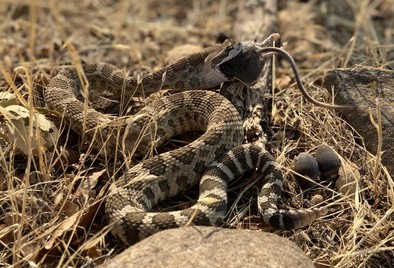
What should you do to avoid a rattlesnake bite?
A. Wear flip-flops when walking on trails.
B. Listen to music through earbuds so you don't hear them.
C. Stick to well-used trails when hiking.
D. Let your dog run free on hiking trails.
Keep scrolling to find out!
Photo by Tobias Felbeck, BLM
|

BLM Bakersfield Field Office issues December oil and gas lease sale notice, Kern County - protest period ends Nov. 9
The Bureau of Land Management Bakersfield Field Office is offering seven parcels totaling more than 4,000 acres of Federal minerals for a December oil and gas lease sale. All parcels are in or adjacent to existing oilfields in Kern County. The 30-day protest period ends Nov. 9. (BLM CA News Release)
|
|
Question of the Week Answer
The answer is C!
Rattlesnakes are not confined to rural areas. They have been found in urban areas, on riverbanks and lakeside parks and at golf courses. The following safety precautions can be taken to reduce the likelihood of an encounter with a rattlesnake.
- Be alert. Like all reptiles, rattlesnakes are sensitive to the ambient temperature and will adjust their behavior accordingly. After a cold or cool night, they will attempt to raise their body temperature by basking in the sun midmorning. To prevent overheating during hot days of spring and summer, they will become more active at dawn, dusk or night.
- Wear sturdy boots and loose-fitting long pants. Never go barefoot or wear sandals when walking through brushy, wild areas. Startled rattlesnakes may not rattle before striking defensively.
- When hiking, stick to well-used trails. Avoid tall grass, weeds and heavy underbrush where snakes may hide during the day.
- Do not step or put your hands where you cannot see. Step ON logs and rocks, never over them, and be especially careful when climbing rocks or gathering firewood. Check out stumps or logs before sitting down, and shake out sleeping bags before use.
- Never grab “sticks” or “branches” while swimming in lakes and rivers. Rattlesnakes can swim.
- Be careful when stepping over doorsteps as well. Snakes like to crawl along the edge of buildings where they are protected on one side.
- Never hike alone. Always have someone with you who can assist in an emergency.
- Do not handle a freshly killed snake, as it can still inject venom.
- Teach children early to respect snakes and to leave them alone.
- Leash your dog when hiking in snake country. Dogs are at increased risk of being bitten due to holding their nose to the ground while investigating the outdoors. Speak to your veterinarian about canine rattlesnake vaccines and what to do if your pet is bitten
Source: California Department of Fish and Wildlife
|
|
|
News.Bytes is a publication of the Bureau of Land Management in California.
Bureau of Land Management
California State Office
2800 Cottage Way, Suite W1623
Sacramento, CA 95825
(916) 978-4600
Send comments to the News.Bytes Team | Subscribe to News.Bytes | Unsubscribe
|
     
|
|
|